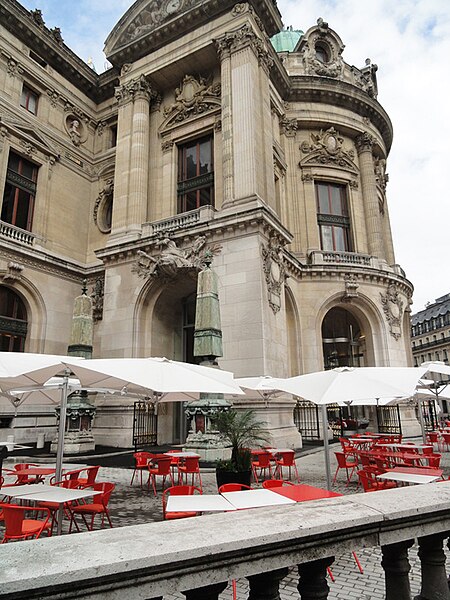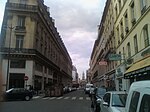L'Opéra restaurant
2011 establishments in FranceBuildings and structures in the 9th arrondissement of ParisFrench restaurantsRestaurants established in 2011Restaurants in Paris ... and 1 more
Tourist attractions in Paris

L'Opéra Restaurant is a restaurant in Paris, France. Built into the Palais Garnier opera house's east facade, the restaurant is at the intersection of Gluck and Halévy streets, at the Place Jacques Rouché, in the 9th arrondissement. The restaurant premiered in 2011, 136 years after the Opera itself was opened.
Excerpt from the Wikipedia article L'Opéra restaurant (License: CC BY-SA 3.0, Authors, Images).L'Opéra restaurant
Rue Halévy, Paris 9th Arrondissement (Paris)
Geographical coordinates (GPS) Address Nearby Places Show on map
Geographical coordinates (GPS)
| Latitude | Longitude |
|---|---|
| N 48.8720826 ° | E 2.3327065 ° |
Address
Opéra - Rue Halévy
Rue Halévy
75009 Paris, 9th Arrondissement (Paris)
Ile-de-France, France
Open on Google Maps










